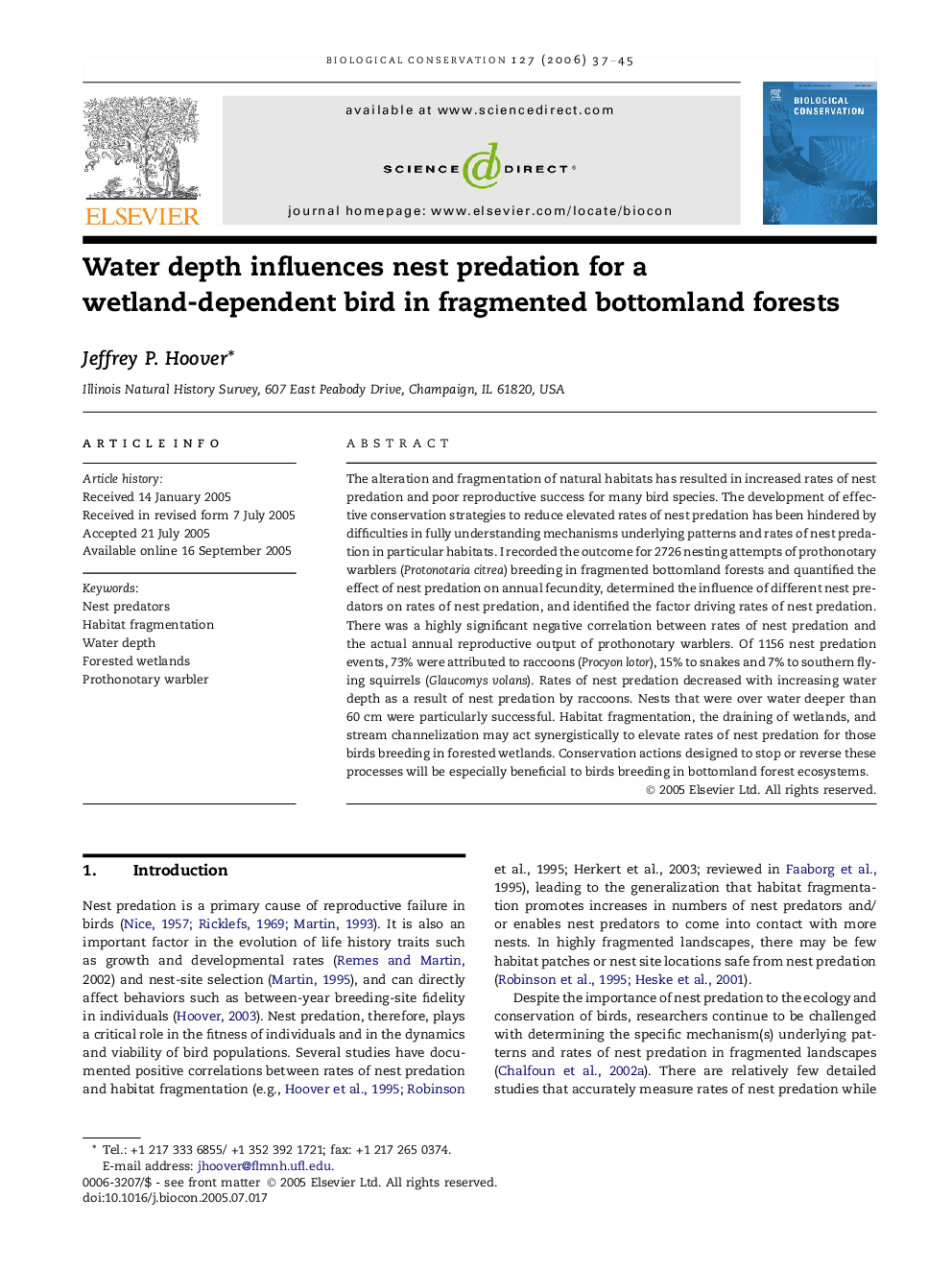| کد مقاله | کد نشریه | سال انتشار | مقاله انگلیسی | نسخه تمام متن |
|---|---|---|---|---|
| 4387907 | 1304637 | 2006 | 9 صفحه PDF | دانلود رایگان |

The alteration and fragmentation of natural habitats has resulted in increased rates of nest predation and poor reproductive success for many bird species. The development of effective conservation strategies to reduce elevated rates of nest predation has been hindered by difficulties in fully understanding mechanisms underlying patterns and rates of nest predation in particular habitats. I recorded the outcome for 2726 nesting attempts of prothonotary warblers (Protonotaria citrea) breeding in fragmented bottomland forests and quantified the effect of nest predation on annual fecundity, determined the influence of different nest predators on rates of nest predation, and identified the factor driving rates of nest predation. There was a highly significant negative correlation between rates of nest predation and the actual annual reproductive output of prothonotary warblers. Of 1156 nest predation events, 73% were attributed to raccoons (Procyon lotor), 15% to snakes and 7% to southern flying squirrels (Glaucomys volans). Rates of nest predation decreased with increasing water depth as a result of nest predation by raccoons. Nests that were over water deeper than 60 cm were particularly successful. Habitat fragmentation, the draining of wetlands, and stream channelization may act synergistically to elevate rates of nest predation for those birds breeding in forested wetlands. Conservation actions designed to stop or reverse these processes will be especially beneficial to birds breeding in bottomland forest ecosystems.
Journal: Biological Conservation - Volume 127, Issue 1, January 2006, Pages 37–45